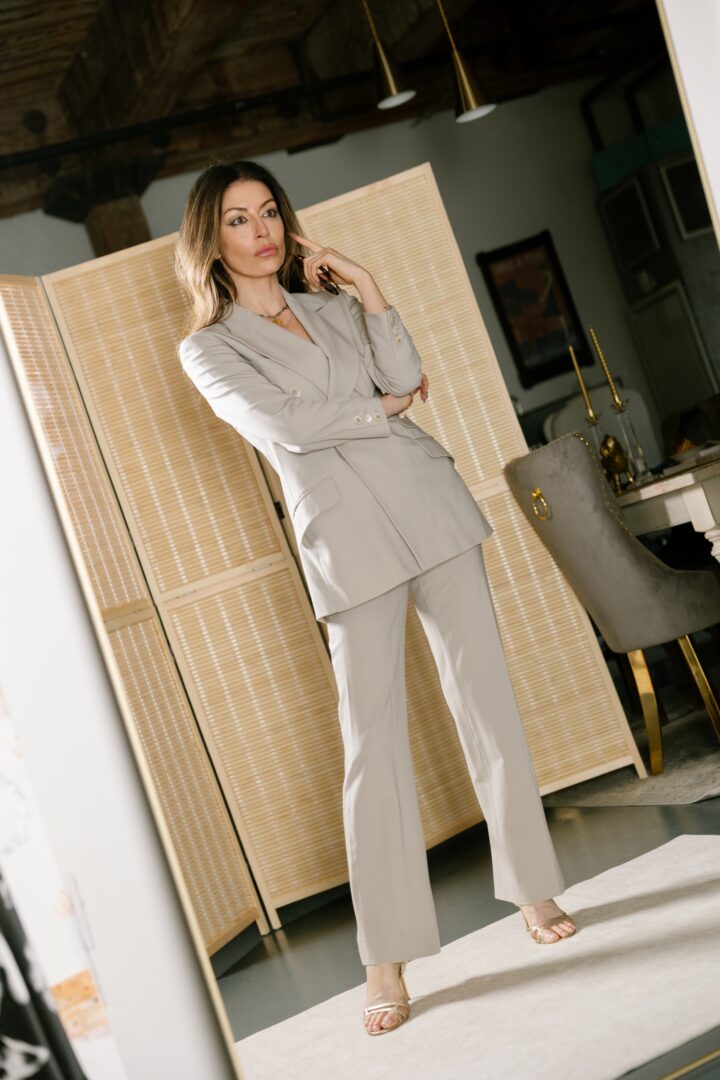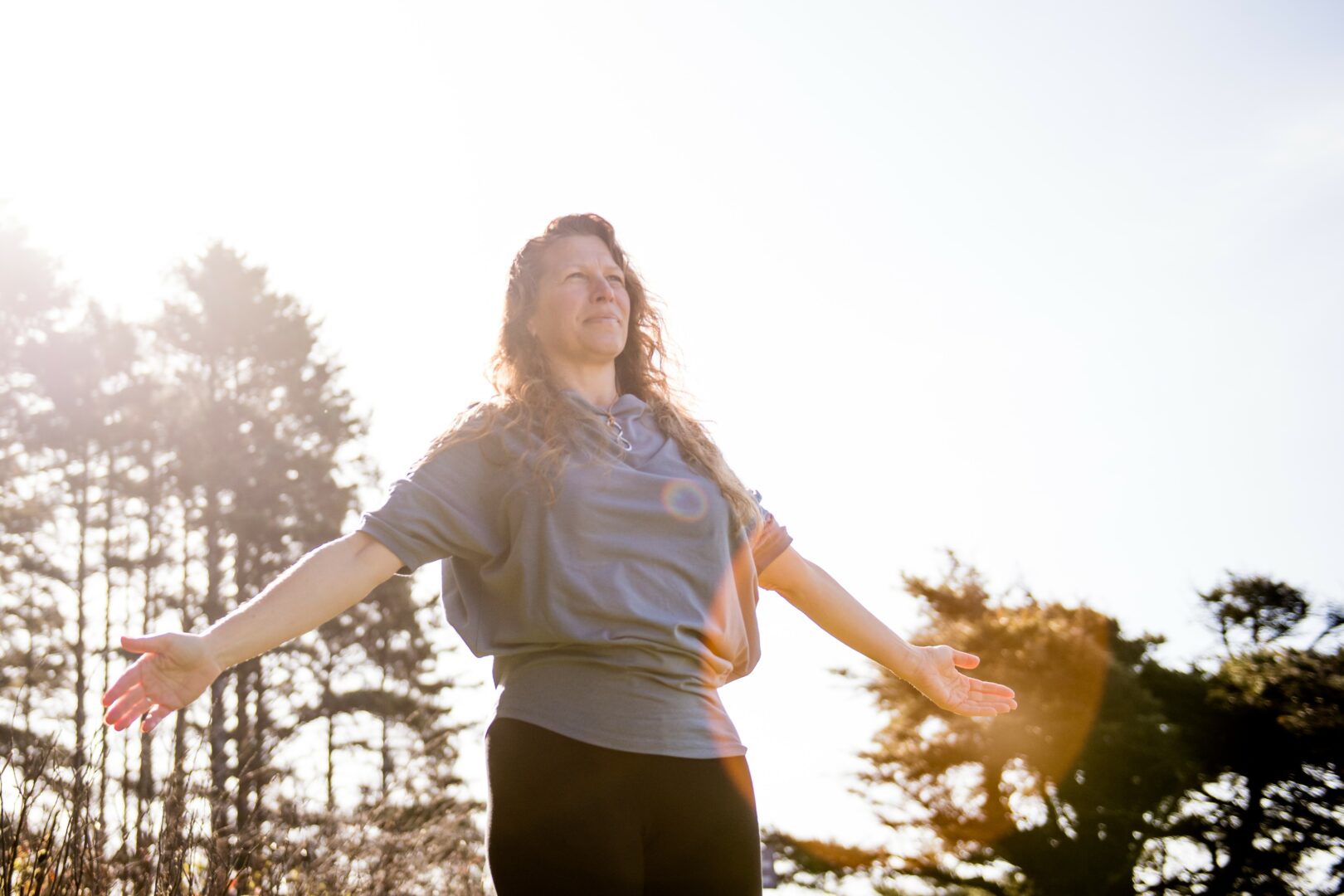We recently connected with Julia Livingston and have shared our conversation below.
Julia, we’re so excited for our community to get to know you and learn from your journey and the wisdom you’ve acquired over time. Let’s kick things off with a discussion on self-confidence and self-esteem. How did you develop yours?
People often think I’ve always been confident, and I understand why—it looks that way from the outside, and truthfully, until recently, I was. I’ve never watered myself down to fit in, I’ve always spoken my mind, and Clovis has reflected that since day one. For the first five and a half years, I designed every piece myself. I didn’t chase trends or try to fit into the fashion industry’s mold. I built a functional brand that carried my personality, my humor, my love for clothing in every stitch.
I never thought confidence was something you had “to find”, but the truth is confidence isn’t permanent—sometimes it has to be rebuilt, sometimes from nothing. This past May, I was the victim of violent assault and battery by a man inside my own home. It happened in the 40 foot hallway that I famously had turned into a closet—my favorite part of my house, the space I always called my safe haven. I had built that closet to surround myself with beauty, order, and possibility; my favorite items were kept proudly on display to easily access and index. Every outfit possibility at my fingertips. I wanted to walk through it and feel joy: clothes organized by color, sleeve length, style, all visible and alive. To me, it wasn’t just storage. It was my “Devil Wears Prada” closet. My fashion sanctuary.
When that space was violated, it wasn’t just my safety that was taken from me—it was my power, my sense of self. I didn’t want to leave the house. I didn’t want to see people. I had nothing to talk about, and I felt numb. Some days, I still do. My confidence, my independence, even the sheer elation I got from clothing—everything felt stolen. I’m still reeling from it. I’m in therapy, I’m in court, I’m still piecing together what healing looks like.
But I knew one thing: I couldn’t give up the one thing that has always given me unwavering happiness—fashion. So I started reclaiming my closet. Literally. I forced myself back into that space. I got dressed up, even when I had nowhere to go. I started creating outfits again, experimenting with balance, with color, with shape and sharing it with others, reminding myself that this was still mine. In there, I was still in control. That closet, the very place where my confidence was stripped from me, became the place I chose to rebuild it.
That’s why Clovis feels more personal now than ever before. I’ve shifted into styling and designer resale, and it’s not just a business—it’s survival, it’s passion, it’s reclaiming my self-esteem. When I source rare vintage pieces, or track down the impossible find for a client, or show someone how to wear something in a way that makes them feel powerful, I’m also doing that for myself. When a client lights up seeing themselves in a new way, or I find them a new piece they love, it reminds me of what I’m fighting for.
The saying “look good, feel good” is one that that people throw around casually, but I believe in it on a deeper level. Dressing yourself isn’t shallow. It’s psychological. Clothes change how you carry yourself, how you see yourself, how you meet the world. Outfits are like chain reaction—when the pieces come together, everything shifts. That’s what I’ve always loved about fashion. And now, it’s what’s unironically helping me stitch myself back together.
So yes, my journey with confidence has been new for me. It’s not finished and I’m looking forward to learning more about this new version of me. But even in the middle of it, I can say this: I’m still here. Clovis is still here. And both of us are stronger because we refuse to let anyone else write the ending. We all collectively get to decide how much space we take up in the world, and how. And knowing you have room to be exactly who you are and doing so with reckless abandon is the most confident thing I can think of.
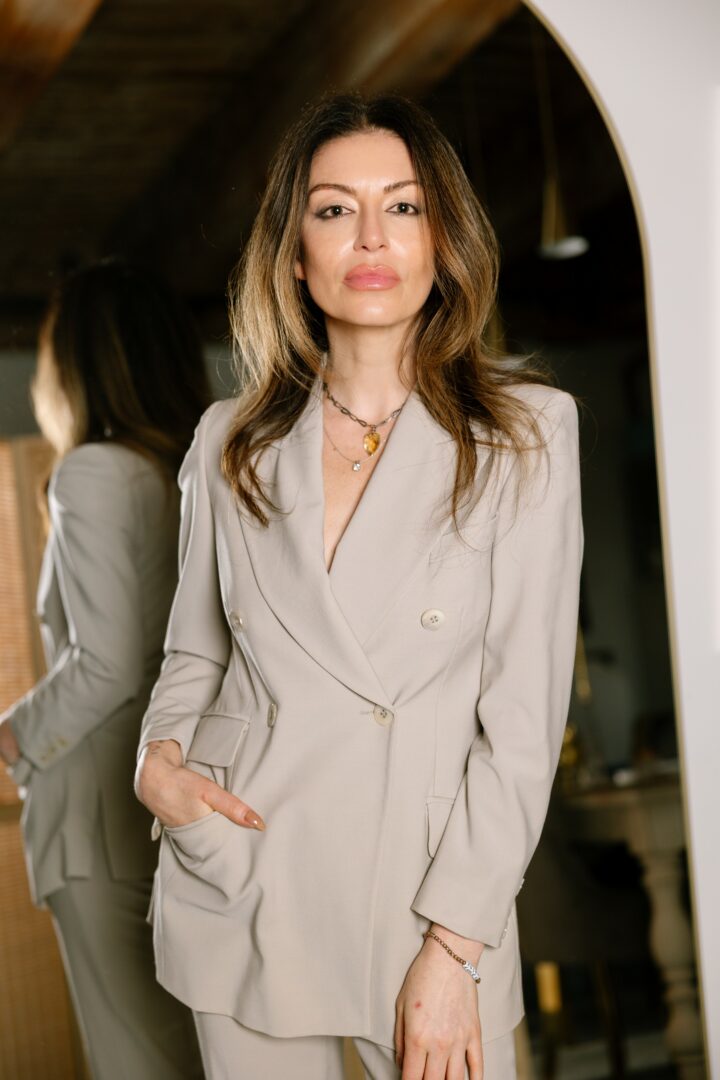
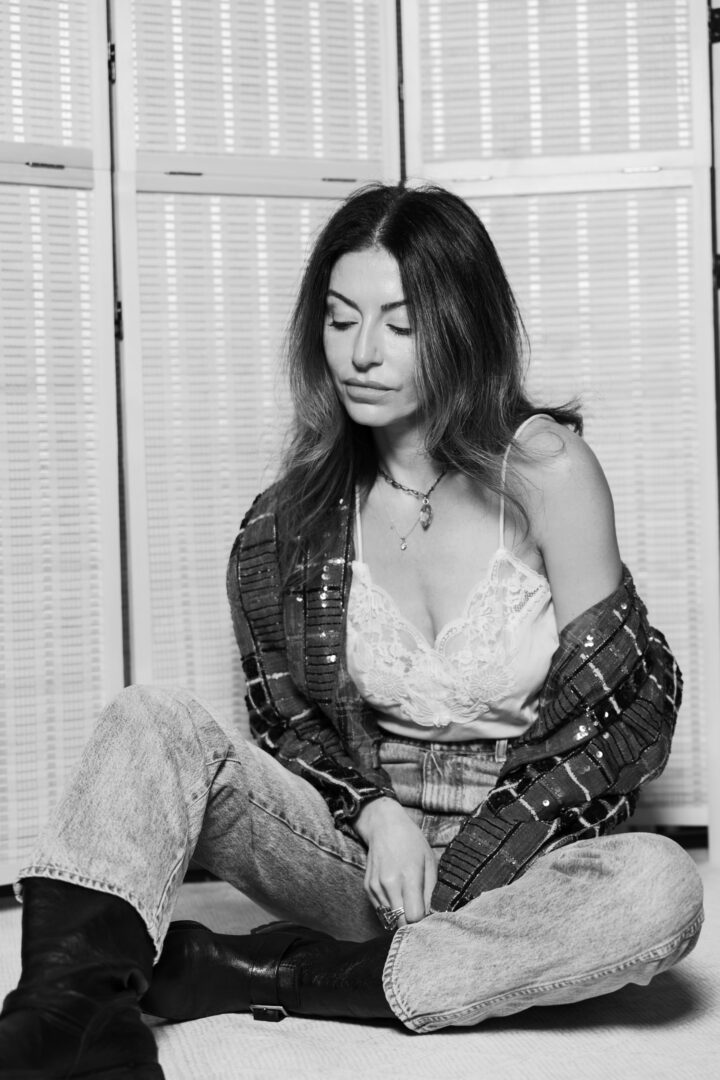
Thanks for sharing that. So, before we get any further into our conversation, can you tell our readers a bit about yourself and what you’re working on?
Clovis has always been an extension of me. For the first five and a half years, I designed everything myself—pieces that carried my humor, my taste, and my attitude woven straight through them. It wasn’t about chasing what was popular or fitting neatly into the fashion industry; it was about making something that felt honest to me. About creating a platform where others could be honest, too.
Now, Clovis is in a new chapter. After years of designing, I’ve shifted into styling and designer resale, and I’m building a highly curated closet—part archive, part shop—where people can either come in person or shop online. What I do is find the unfindable. I know how to track down the rare, the unusual, the pieces that carry history. Years of studying couture, poring over fashion books, and digging through old runway archives trained my eye. I can usually tell who designed a piece, when it was made, and why it matters.
For me, fashion isn’t just clothing—it’s alignment. The way lines, fabrics, and eras can collide or balance each other creates something electric. Some people want the polish of symmetry; others crave the energy of asymmetry—color clashes, pattern mixes, unexpected pairings. My job is to help people see how those choices expand what’s already in their closet and give them a style that feels alive, not formulaic. A way they can’t see it themselves or the alchemy of fashion. The easiest way I can explain it is this: creating an outfit is very much like chemistry. But instead of studying elements, their properties and how they interact with each other, style is exploring how different pieces and patterns, colors and cuts behave together. Some people think in numbers, I think in outfits.
The best part of what I do is sourcing things with real stories. Recently, I found a 1963 Givenchy couture dress designed for Audrey Hepburn. To hold that in my hands, knowing it had lived another life, and that she had likely worn it—that’s not just fashion, that’s history. I found another person unknowingly selling two matching pieces to a 1996 Tom Ford-era Gucci suit in immaculate condition (pictured), and a 90’s Emanuel Ungaro from a vintage store in Poland (also pictured). A dear client asked me to find a specific 1980s Hermès silk jacket worn in “Emily In Paris”; I tracked it down halfway across the world in a consignment store and brought it back to her. Those are the moments where I am the most alive. The most me. I live for the thrill of the chase.
And I don’t just tell people to take risks—I show them. I’ll put together something unexpected, like vintage dalmatian-print Yves Saint Laurent trousers with a clashing Pucci top, and wear it even when I feel uncomfortable being out in the world. Sometimes people stare, but it proves the point: style isn’t about blending in, it’s about claiming space. Clovis isn’t just about resale; it’s about proving every day that what you wear can change how you feel and how you move through the world.
That’s the psychology of fashion. Fashion changes us, improves our mood, gives us power. It is our armor. I’m literally showing people how to gain confidence through clothing as I’m doing it myself in real time, and bringing them with me.
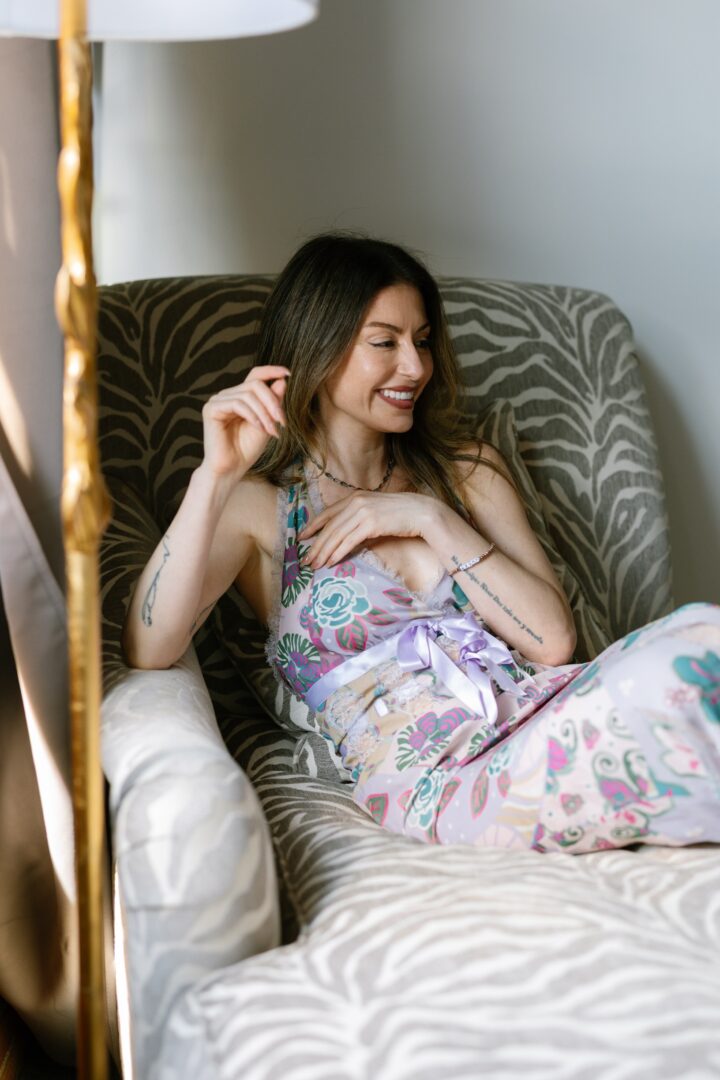
Looking back, what do you think were the three qualities, skills, or areas of knowledge that were most impactful in your journey? What advice do you have for folks who are early in their journey in terms of how they can best develop or improve on these?
Grit, because I’ve had to get back up more times than I can count. We all know the adage of being knocked down and standing back up—but for me, that’s not just a metaphor, it’s been physical reality. Personally, I’m still reeling from what happened in May, and every day is about choosing to keep going while I figure out what healing looks like, how to not feel powerless because someone tried to take that from me. Professionally, Clovis has been through a lot right there with me—I’ve had shipments delayed for months overseas, was audited by the IRS three separate times at the same time. Not to mention all the unpredictable challenges that come with running a business. Each time, I had to figure it out. It would have been easier to quit at so many points, but grit is what’s kept me, and the brand, alive. Grit isn’t about never being shaken—it’s about facing the next challenge without flinching, and handling it with as much grace as you can, even when you don’t feel graceful at all.
Instinct, because Clovis has always been powered by my eye and my gut. I know when a piece has weight, when it has story, when it has the kind of energy that can change the way someone sees themselves. That instinct has shaped every part of Clovis—from the pieces I designed, to the ones I now find, to the way I style clients. It’s not strategy, it’s feel and vision, and trusting it has never steered me wrong. I see how pieces change the way someone carries themselves, how the right pairing feels inevitable once you see it. It’s not about chasing trends—it’s about trusting yourself. I’m fortunate to have had parents who taught me this since day one.
Honesty, because I wouldn’t be where I am today without it. I’ve never been interested in gouging people or cutting corners. My business has always been about being fair, being transparent, and putting relationships before transactions. I care about matching people with the right pieces, making sure they’re happy with what they’ve bought, and knowing they can trust me and my quality. Why? Because while freshly reeling from trauma, I knew I had to share my truth about what happened to me and to not let make me feel small. To be honest about horrors so many others have faced and maybe will in their lifetimes. To give others a voice. And when I did, I didn’t know if people would care, but all of Clovis showed up with support that gave me strength I didn’t have on my own. Honesty is what’s built the community around Clovis, and the community is what gives me the strength to keep going.
My advice for anyone, no matter where they are in their journey is this: don’t waste your time trying to be palatable for others. Act on your instincts, be honest about who and where you are, create a community—no matter how big or small—you truly care about, and always keep moving forward. Even if some days that just means an inch. That’s how you create something that lasts. That’s how you keep going. That’s how you know you can always come back to you.
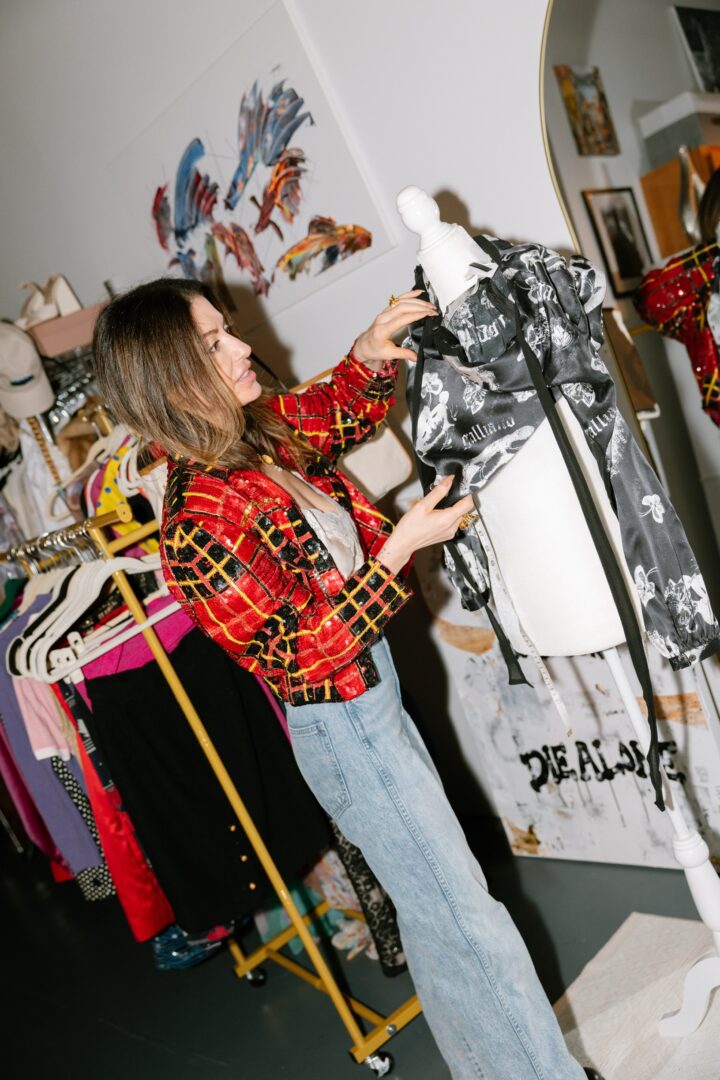
Who is your ideal client or what sort of characteristics would make someone an ideal client for you?
My ideal client is someone who’s open. Open to trying things that might scare them a little, open to seeing themselves in a new way, open to letting clothes shift how they feel, open to accessing confidence in a version themself they don’t yet know. They don’t have to obsess over fashion history or keep up with trends—those parts doesn’t matter. What matters is that they’re willing to trust the process and step outside of what’s comfortable. To know I have been right where they are before.
The clients I love working with most are the ones who are curious and willing to play. They’re not coming to me for a cookie-cutter look or to blend in; they’re coming because they want something with personality, something unique, something that brings them a glow of individuality. I can work with anyone’s budget, body, or lifestyle, but I can’t work with someone who’s unwilling to step at least one foot out of their comfort zone or try something new.
An ideal client doesn’t need to be “fashionable” already—they just need to want to feel more like themselves, only sharper, bolder, freer. My job is to get them there. While they help me do the same.
Contact Info:
- Website: https://www.shop-clovis.com
- Instagram: @shopclovis


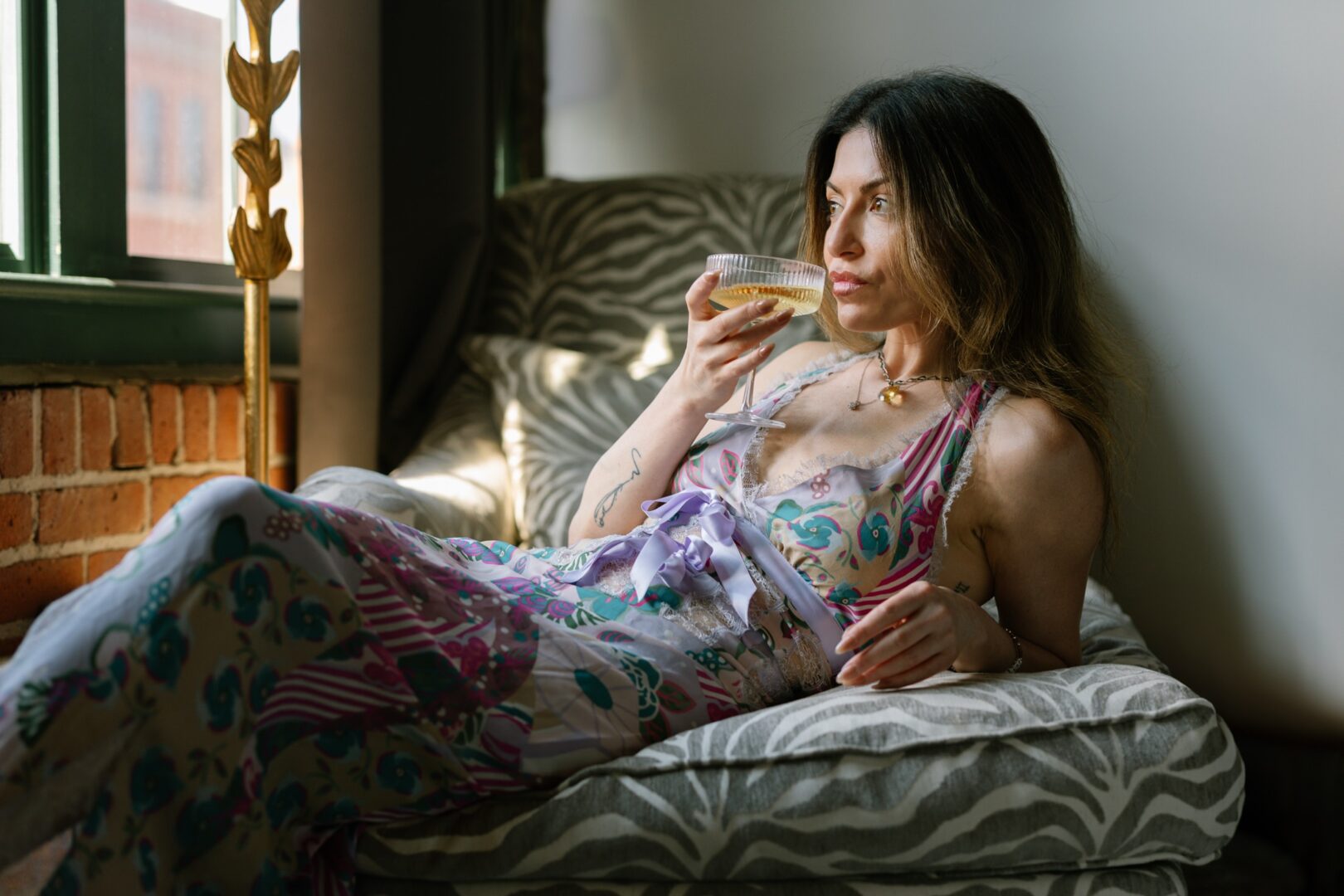
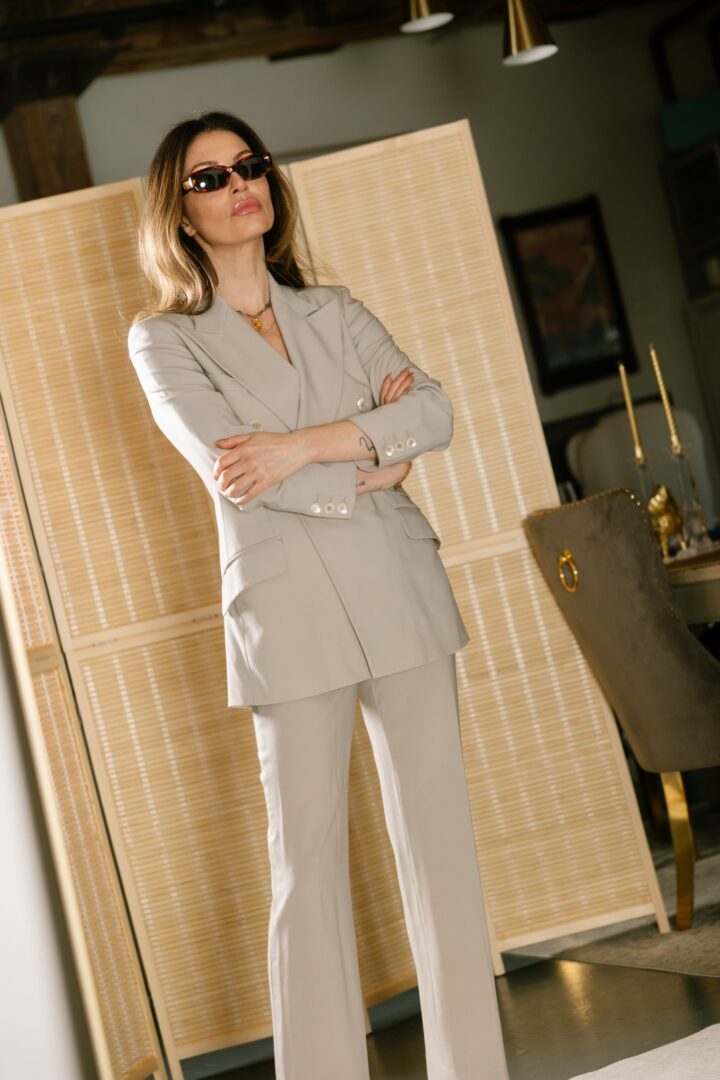
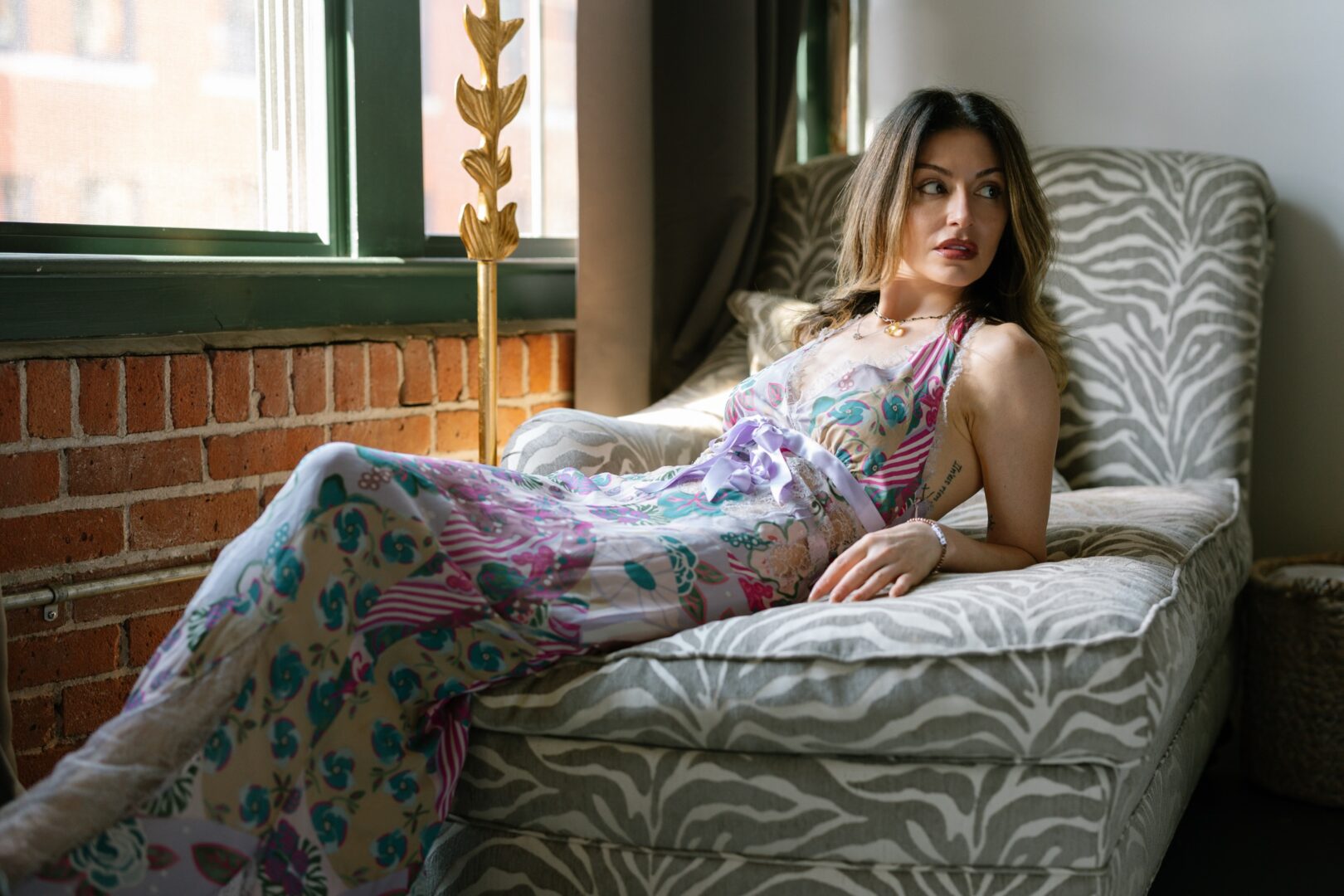
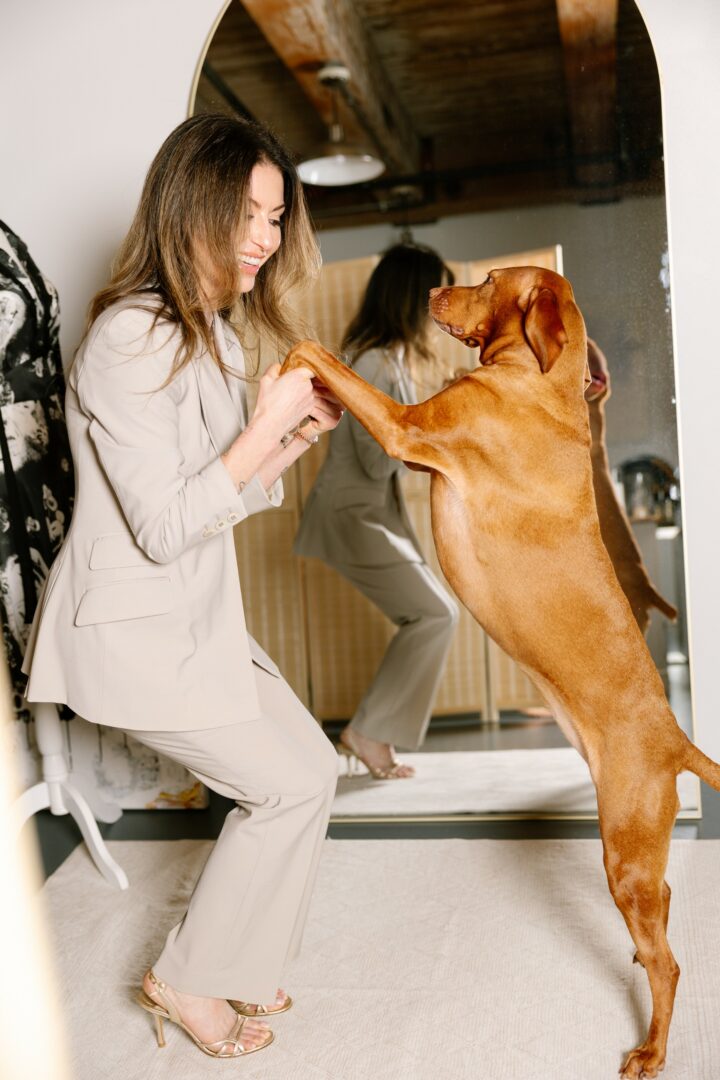
Image Credits
Haley Abram
so if you or someone you know deserves recognition please let us know here.

